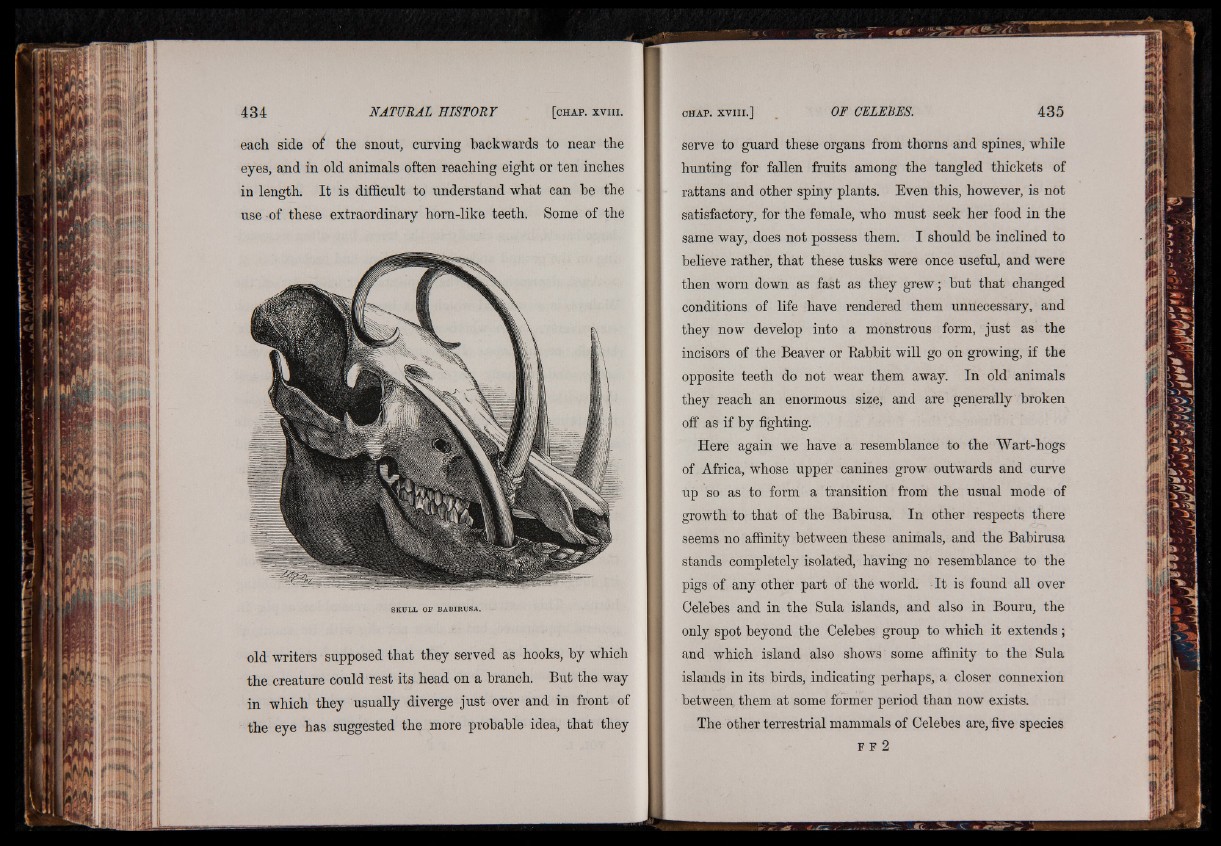
each side 01 the snout, curving backwards to near the
eyes, and in old animals often reaching eight or ten inches
in length. It is difficult to understand what can he the
use of these extraordinary horn-like teeth. Some of the
SKULL OF BABIRUSA.
old writers supposed that they served as hooks, by which
the creature could rest its head on a branch. But the way
in which they usually diverge just over and in front of
the eye has suggested the more probable idea, that they
serve to guard these organs from thorns and spines, while
hunting for fallen fruits among the tangled thickets of
rattans and other spiny plants. Even this, however, is not
satisfactory, for the female, who must seek her food in the
same way, does not possess them. I should he inclined to
believe rather, that these tusks were once useful, and were
then worn down as fast as they grew; hut that changed
conditions of life have rendered them unnecessary, and
they now develop into a monstrous form, just as the
incisors of the Beaver or Babbit will go on growing, if the
opposite teeth do not wear them away. In old animals
they reach an enormous size, and are generally broken
off as if by fighting.
Here again we have a resemblance to the Wart-hogs
of Africa, whose upper canines grow outwards and curve
up so as to form a transition from the usual mode of
growth to that of the Babirusa. In other respects there
seems no affinity between these animals, and the Babirusa
stands completely isolated, having no resemblance to the
pigs of any other part of the world. It is found all over
Celebes and in the Sula islands, and also in Bouru, the
only spot beyond the Celebes group to which it extends;
and which island also shows some affinity to the Sula
islands in its birds, indicating perhaps, a closer connexion
between them at some former period than now exists.
The other terrestrial mammals of Celebes are, five species